Your Neighborhood Roofing Company
Roofing Systems
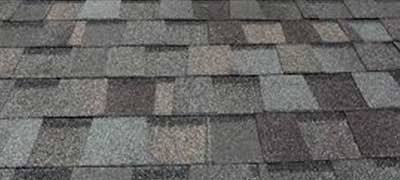
Asphalt Shingles
The most common residential roofing material used in the United States, asphalt shingles are popular because they are economical and easy to install. These shingles can be reinforced with fiberglass or organic materials without changing the appearance of the shingle. Composite shingles excel at flexing and adapting to a roof's movements due to expansion and contraction. Shingles are manufactured as either three-tab shingles or architectural shingles. The three-tab variety is designed to look like three shingles though it is actually all one piece. It is easy to install, economical, and very popular. Architectural shingles are manufactured with an additional layer of asphalt to give them more dimension and enable them to mimic the look of bulkier roofing products like wood or slate. Both types of shingles come in a large variety of colors to suit just about any home design.
A variety of factors can affect shingle life, including weather, roof pitch, quality of installation, and of course the quality of the shingle. Shop around and you will find warranties ranging from 15 to 30 years.
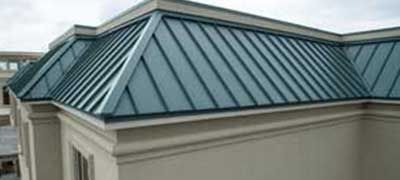
Metal Roofing
This type of roofing provides a sleek, lightweight, long-lasting, and recyclable design which lasts longer than asphalt or wood, and offers high solar reflectance. Metal roofs are resistant to extreme weather conditions. Available in two types, panels and shingles, metal roofs come in aluminum, copper, stainless steel and zinc.
While metal roofing might be the best choice for some home or building owners, we understand that it’s not always to best material for every consumer. The best way to know if metal roofing is a good match for you is to consider some of the most common reasons people decide to buy:
- Longevity: Metal roofing is specifically engineered to last decades longer than any other roofing material. Actually, many consumers ultimately decide to purchase a metal roof because it’ll be the last roof that they ever have to put on their home or business. Depending upon the type of metal material used, most metal roofs last 60+ years without any signs of degradation or corrosion.
- Durability: When comparing different materials, like wood, concrete, metal, plastic, or glass, metal easily stands out as the strongest and most durable. If properly installed, metal roofing is designed to withstand: Strong winds, Debris (leaves, sticks, etc.), Rain, Snow, Hail, Mold, Mildew, Rodents and other animals. Not to mention, metal roof materials are often Class A fire-rated and non-combustible, meaning its fire resistance is the highest grade possible. This proven durability against common roofing threats is one of the fundamental reasons metal roofing is so popular.
- Maintenance: The level of upkeep needed to maintain a metal roof is generally minimal, especially if the roof was correctly installed. General upkeep would include looking for leaves, branches, and other debris that could get stuck on the roof and in the gutters around twice a year and after strong storms. In the event that dirt or other stains do not come off with rain, there are methods to clean your metal roof. Also, a concealed fastener roof will generally have less upkeep than an exposed fastener metal roof.
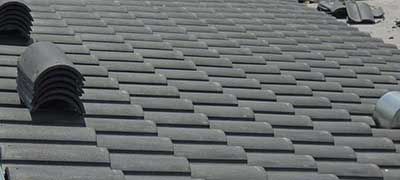
Concrete Tiles
Long-lasting and non-combustible concrete tiles are one of the most energy efficient materials in use today. It is a very heavy roofing material, making it a good choice in high-wind regions. They come in a variety of profiles and are available in several colors, making it a versatile alternative to clay tile.
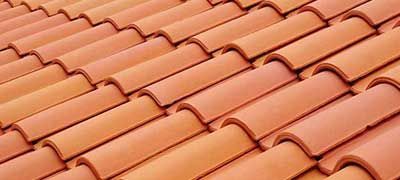
Clay Tiles
Clay tiles add texture and elegance to a roof. Genuine flat, ribbed or scalloped clay tiles are extremely durable and heavy for wind mitigation. It is a very good roofing material for hot climates or where salt air is present.
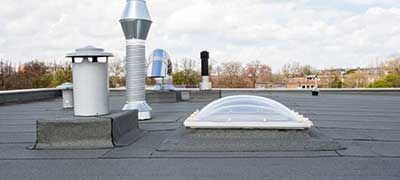
Flat Deck Roofing
These roofs typically have a rubber texture which makes them much more affordable, and can help you save money in the long run. One of the biggest advantages of flat roofs is they are easy to install and maintain. Many different Issues arise from this type of roofing and it is highly recommended to be installed by a professional.
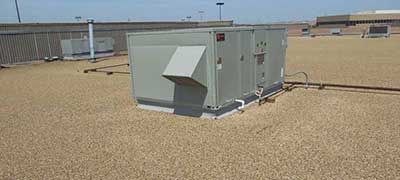
Built-Up Roofing
Built-up roofing consists of layers of asphalt, tar or adhesive topped with an aggregate and is only for flat roofs. Tar and gravel roofs, also for flat roofs, are best for roof-top decks with heavy foot traffic. These roofs may become sticky in summer and necessitate heavier load requirements.
Got Leaks? ParkerHaus team is an Expert Water Leak Detection and Repair Specialist
Get in contact with us for a Free Consultation.
South Florida's Trusted Roofing Contractor
We specialized in both residential and commercial roofing. Get in contact with ParkerHaus Roofing
to consult for free about your roofing project.
Our Services
Business Hours
- Mon - Fri
- -
- Sat - Sun
- Closed
All Rights Reserved · ParkerHaus Roofing

